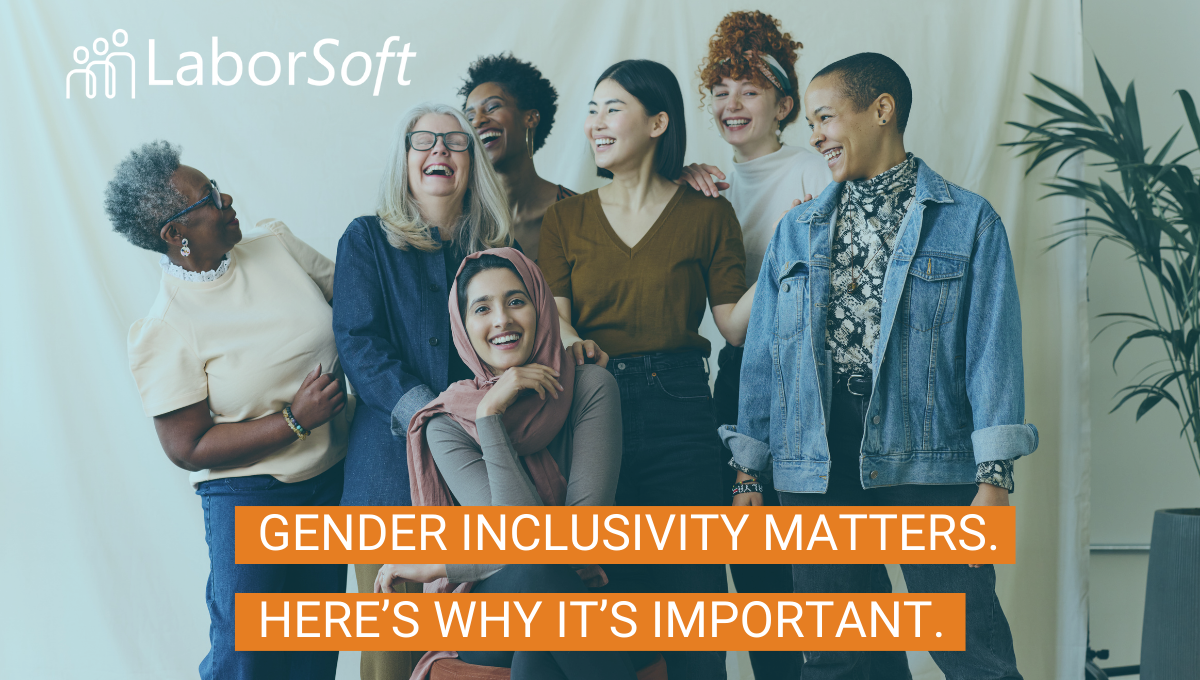Compliance & Legal | Discrimination
The Importance of Creating a Gender Inclusive Workforce
Read Time 6 mins | Oct 11, 2023 | Written by: Frankie Kourtis

In recent years, gender inclusivity has gained increase focus in everything from business to major cultural institutions. The Paris 2024 Olympic Games, for instance, will be the first gender-balanced games in history. Is your HR department adapting to keep up?
Gender inclusivity once referred almost exclusively to creating opportunities for women in the workplace. By many metrics, this is still an ongoing struggle. According to the U.S. Census Bureau, women still only hold around 31.7% of top executive positions across industries.
However, gender inclusivity has evolved into a more complex HR responsibility. There is a cultural reckoning underway around DEI policies, evolving understandings of gender/identity, and efforts to not only prevent gender-based harassment, but provide equal opportunities to people of all identities.
The recent empowerment of the trans community as well as non-binary employees, who otherwise do not conform to typical gender roles or appearances, has led companies to adapt their HR policies and even infrastructure to accommodate and support a new influx of diverse employees.
Millennials and Gen Z now account for a solid bulk of the workforce, and by 2025, Gen Z alone will account for a full one-third. Younger employees have become champions on behalf of the LGBT+ community. As their numbers increase and older generations retire, the expectation will be a high level of gender acceptance and inclusivity in the workplace.
Why Gender Inclusivity Matters In HR
“A lot of companies see culture as a secondary thing,” says Tara Salinas, a professor of business ethics at the University of San Diego. He asserts that if “culture doesn’t align with what Gen Z employees expect, they’re going to leave.” It's incumbent upon leadership and HR to ensure that these new and inclusive cultural norms are emphasized and respected in order to drive retention.
According to a new study from the Pew Research Center, the majority of employed U.S. adults (56%) feel that focusing on increasing diversity, equity, and inclusion (DEI) at work is a good thing. Multiple studies have also concluded that having a highly diverse workforce is simply more productive and profitable. For example, as reported on LinkedIn Learning:
- 60% of respondents in a LinkedIn study said that diversity within their sales team has contributed to their teams’ success.
- Organizations in the top quartile for gender diversity have a +25% likelihood of financially outperforming their peers.
- Organizations in the top quartile for ethnic diversity have a +36% likelihood of financial outperformance.
- Diverse companies earn 2.5x higher cash flow per employee.
- Inclusive teams are over 35% more productive.
- Diverse teams make better decisions 87% of the time.
These findings should not be surprising. The natural world is full of examples supporting this idea. Monocultures are vulnerable to disruption, such as the many times the banana has nearly gone extinct due to diseases that target only one type of banana. By cultivating mostly one variety, instead of preserving biodiversity by coming up with a more varied set of solutions, farmers put the world's entire crop at risk. On the other hand, highly diverse species and ecosystems flourish, because they have more resources at their disposal. They have more tools in the toolbox, so to speak. The same is true of business ecosystems.
So, while on the surface the drive towards inclusivity seems to be "political correctness," it is in fact, more involved. It’s part of a sociological progression that should be supported in order to advance. Companies which embrace tolerance and inclusive hiring practices are highly likely to be rewarded for this in both recognition but moreover in productivity and success.
On the other hand, those that continue to reject inclusive practices will be facing a dual threat: Public disapproval, combined with an ever-increasing likelihood of lawsuits. As recently as June of 2020, the Supreme Court declared that Title VII protections apply to sexual orientation and transgender status, making it unlawful and prohibited to discriminate against individuals based on gender stereotyping. The public mood is also increasingly siding with LGBT+ individuals, and against those who oppress them. Forward-thinking HR departments will be prepared to evaluate DEI policies and identify harassment in the workplace, whether it's related to sex, gender, race, or other types of identity.
Encouraging Gender Inclusivity Within Your Workplace
There's no quick and universal solution for HR departments who wish to encourage more diversity in their hiring practices. However, there are many possible suggestions for those who want to get started:
- Get upper management on your side. One of the biggest sources of pressure against greater diversity is from high-level execs, who tend to be of a previous generation and a bit more conservative.
- Set clear and unambiguous workplace policies against harassment based on gender or sexuality. Even without overt gender discrimination protection, LGBT+ employees are still protected from hostile workplace environments. Company handbooks may reference policies discrimination policies that protect people no matter their race or sexual preference, though the term “preference” may ultimately be changed to “orientation” to further protect this segment of the workforce.
- Hold seminars and training sessions in the workplace. Again, these should not be focused on the political aspect of LGBT+ rights, but rather on the pragmatic benefits of inclusion.
- Consider implementing "blind" candidate review or interview policies that reduce their sexuality or gender as a hiring decision as much as possible. For example, strip resumes of candidates' names and other gender-identifying elements so they can be judged solely on merit when selecting callbacks.
- Add features that would be attractive to non-binary workers, such as gender-neutral bathrooms.
While still in its infancy in the workplace, we’ve seen gender inclusivity in reference to this new segment of workforce come a long way in a short period of time. And this is expected to increase over the next few years. It behooves HR departments to revisit corporate policies and procedures to ensure they are compliant and supportive of all employees.
LaborSoft’s innovative technology is one of many integral solutions that keep your business, in business. Our employee relations analytics, case management workflows, and our central repository of documentation streamlines case management to mitigate risk of operational bottlenecks, costly lawsuits, and legal ramifications stemming from HR issues and complaints. Contact us for a customized demonstration and learn how LaborSoft can help you improve communications, build a more collaborative, safe, and supportive workplace, while reducing the likelihood of costly litigation.
This blog was orignally published on 3/15/19 and updated on 10/11/23.


